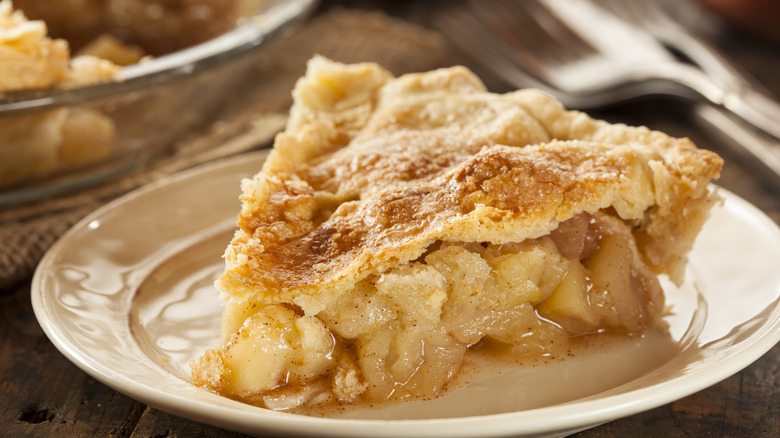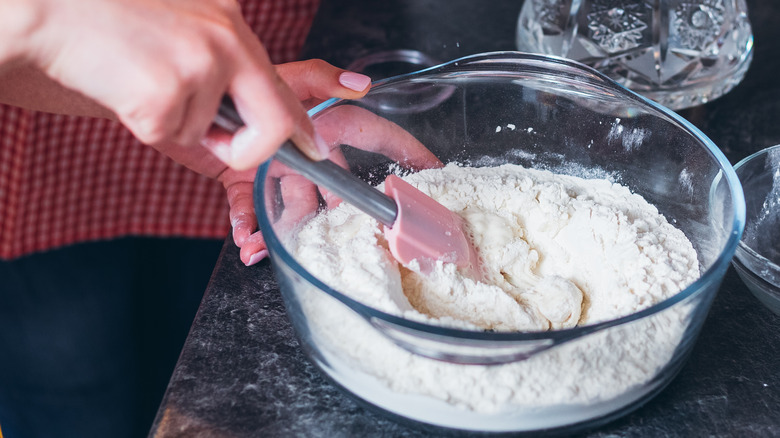For The Flakiest Pie Crust, Bring Out Your Spatula
Crafting the perfect pie often hinges on achieving a flaky crust, and the secret weapon for achieving it might be your trusty spatula. This unassuming kitchen tool brings precision and finesse to the art of pie-making. The spatula's broad, flat surface facilitates careful mixing, ensuring an even distribution of fats without overworking the dough. Beyond mixing, the spatula excels in the delicate art of gentle folding. Its flexibility allows for effortless lifting and turning, preserving the dough's layers without excessive handling. Mastering this technique with the spatula could be the game-changer for achieving that perfect flaky texture that elevates your pie to the next level.
If you're still not sold, as a bonus, the spatula makes cleanup a breeze. Its smooth surface effortlessly scrapes dough remnants from bowls and surfaces, ensuring every bit of your carefully prepared mixture goes into the pie. With the spatula in hand, you not only craft a flaky masterpiece, but you do so with ease and efficiency.
Why a spatula is better for pie crust than being hands-on
When it comes to achieving flaky pastry for your pie crust, avoiding mixing with your hands is generally recommended for several reasons. For one, the warmth from your hands can elevate the temperature of the dough, causing the fats, typically butter or shortening, to soften too much. The success of flaky pastry lies in maintaining these fats in a solid state until the dough is baked. Hand mixing can inadvertently transfer heat, jeopardizing the desired flakiness.
Hands, being a more direct and tactile tool, can also lead to overworking the dough. Overworking encourages the development of gluten, which can result in a tougher pastry rather than the delicate, flaky layers you desire. The goal is to mix the dough just enough to combine ingredients without stimulating excessive gluten formation.
For a flaky pastry, it's essential to have visible fat particles in the dough. These fat particles create pockets when they melt during baking, resulting in the characteristic flakiness. Hand mixing can inadvertently break down these fat particles, diminishing their role in creating the desired texture. Achieving a uniform distribution of fats throughout the dough is what creates the distinct layers that contribute to flakiness. Uneven mixing can lead to uneven textures in the final baked product.

